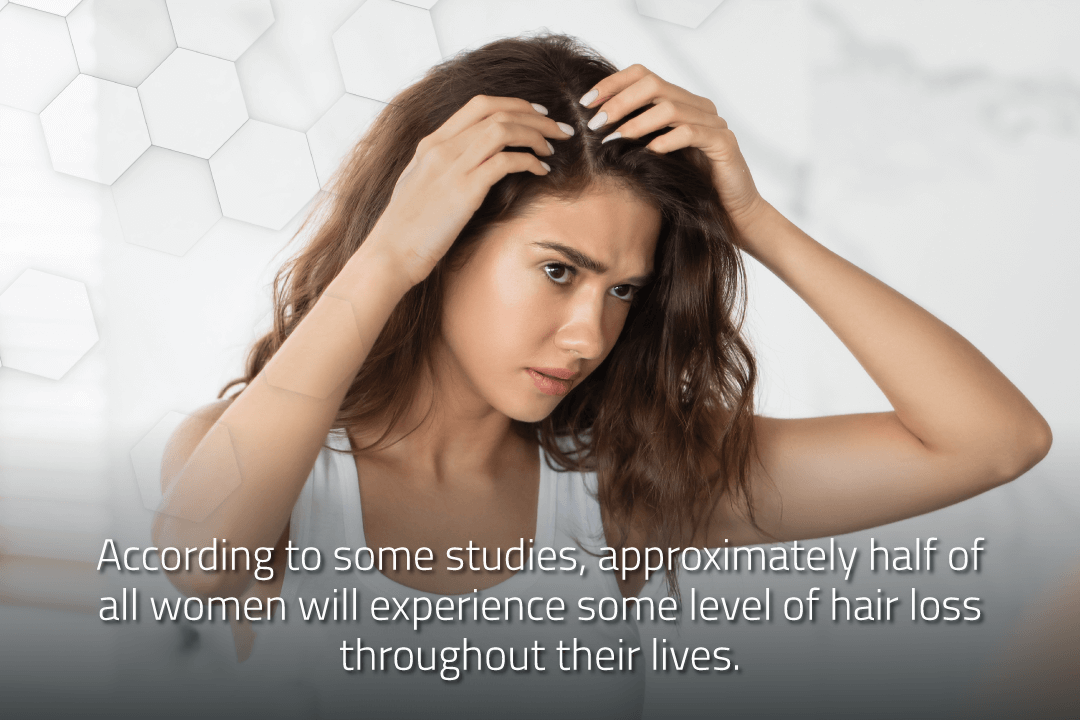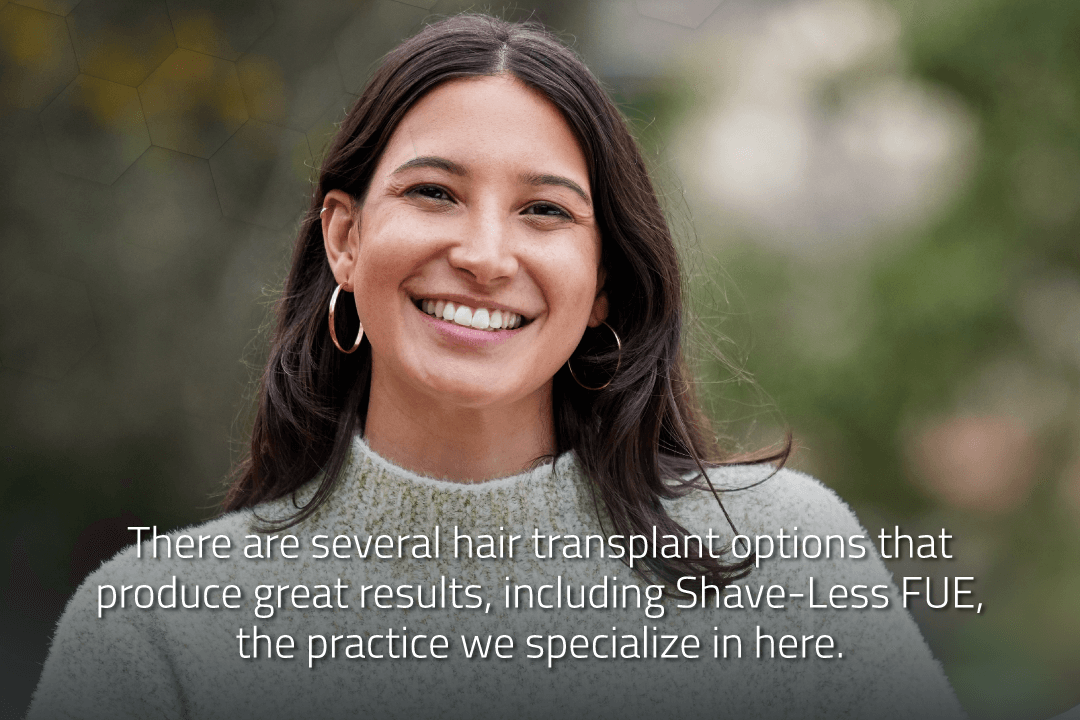Hair loss is typically associated with male pattern baldness, but it’s also quite common in women. According to some studies, approximately half of all women will experience some level of hair loss throughout their lives.
While it can occur at any age, most women experiencing hair loss notice it after the age of 40, or with the onset of menopause.
When it comes to men’s hair loss, the solution is often straightforward – and there are very effective surgical options. The picture is more complicated when it comes to hair loss in women. Here’s a look at the treatment options and challenges.

Male vs. Female Hair Loss
Androgenetic alopecia, or pattern hair loss, occurs in both men and women. While it’s caused by the same thing in both sexes – a hormone called DHT – alopecia presents quite differently in women than in men.
Men typically experience hair loss in an M-shaped pattern, where the hair at the temples starts to thin out as the hairline moves farther and farther back.
As the process continues, many men see the hair at their hairline and the top of their heads disappear entirely, while the hair on the sides and back stays thick.
In women, hair loss typically follows a different pattern.
Instead of receding back from the hairline, it often starts at the part. As the part widens, hair thinning occurs over all areas of the head, resulting in diffuse hair thinning rather than loss of all hair at the top. Unlike men, women rarely go entirely bald.
Causes of Hair Loss in Women
While DHT is usually a major culprit, the causes of hair loss in women are more complex and varied than they are in men. Some contributing factors include:
- Changes in hormonal balance (frequently linked to pregnancy or menopause)
- Certain medications, such as hormonal birth control or antidepressants
- Major weight loss
- Nutritional deficiency
- Vitamin D deficiency
- Thyroid problems
- Anemia
- Skin conditions
- Stress
- Certain hair styling practices
It’s important to note that many women experience patterned hair loss because of genetically-timed miniaturization of the hair follicles, which leads to visible thinning—but not total hair loss.
We regularly conduct folliclescope analysis of female patients to evaluate miniaturization and loss of hair density, and rule out more devastating forms of hair loss such as scarring alopecia, which is more common in women—especially those with African-type hair.

Hair Transplants for Women
There are several hair transplant options that produce great results, including Shave-Less FUE, the practice we specialize in here.
However, surgical hair restoration procedures such as FUE, Shave-Less FUE, and FUT all have one thing in common: they rely on taking healthy hair follicles from a donor site, and re-implanting them in thinning areas.
This is a very effective procedure for most men, who typically experience hair loss on the top of their heads, while the hair on the sides and back stays relatively thick and healthy.
With women, however, the hair loss can be more diffuse, so there isn’t a strong donor site from which to harvest hair follicles. This is why most women aren’t good candidates for surgical hair restoration.
A small percentage of women are good candidates, however. These include:
- Women experiencing traction alopecia. This is a kind of hair loss where the follicles are damaged after prolonged periods of wearing the hair in a very tight style, such as cornrows or braids.
- Women with a hair loss pattern similar to that seen in men—where thinning occurs at the hairline or top of the head, and there is a donor site with thicker hair growth.
- Women who are experiencing baldness or thinning around a site of injury, such as a scar, surgical incision, or burn.
Shave-Less FUE is often the easiest surgical procedure for women, as no part of the scalp is shaved—and most women with thinning hair do have enough to conceal signs of a transplant.
Treating Hair Loss in Women
There can be a number of contributing causes for hair loss in women and determining the right treatment often requires getting to the bottom of the mystery.
Before recommending a treatment, we perform a full physical work-up of each female patient, in consultation with her current physician. This includes thyroid function testing, complete blood count, dermatology testing, and other tests as needed.
Once we identify the underlying medical condition, it can be treated. Treatment options may include medication adjustments, new medications, or dietary and lifestyle changes.
Often, once the underlying medical issue is taken care of, the patient’s hair returns to normal growth. However, if no treatable medical condition is causing your hair loss, you still have options.
Non-Surgical Hair Restoration Options for Women
One method we use frequently for women is platelet-rich plasma therapy (PRP).
PRP involves extracting platelets, or healing cells present in your own blood, and then injecting them in areas of thinning hair. These cells stimulate blood flow in the area, strengthening and thickening the hair shaft and reactivating dormant follicles.
While results aren’t guaranteed, we’ve seen great outcomes with this method. In our practice, we extract a super-concentrated platelet cocktail through proprietary methods to bring our patients the best result possible.
Interested in Surgical Options for Women’s Hair Loss?
Schedule a confidential conversation with Dr. Daniel A. Danyo today – either in person or online. He’ll evaluate your hair loss, discuss your options in detail, and help you get started on the path toward thicker, fuller natural hair.

